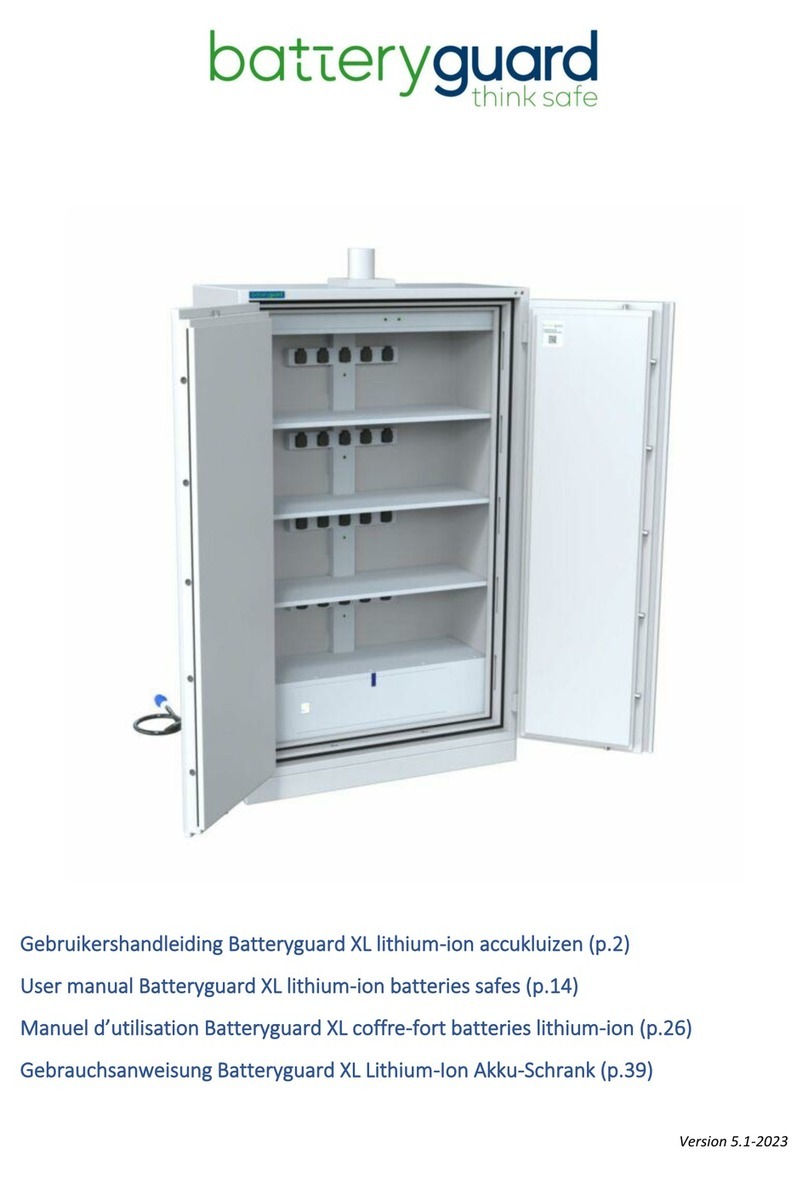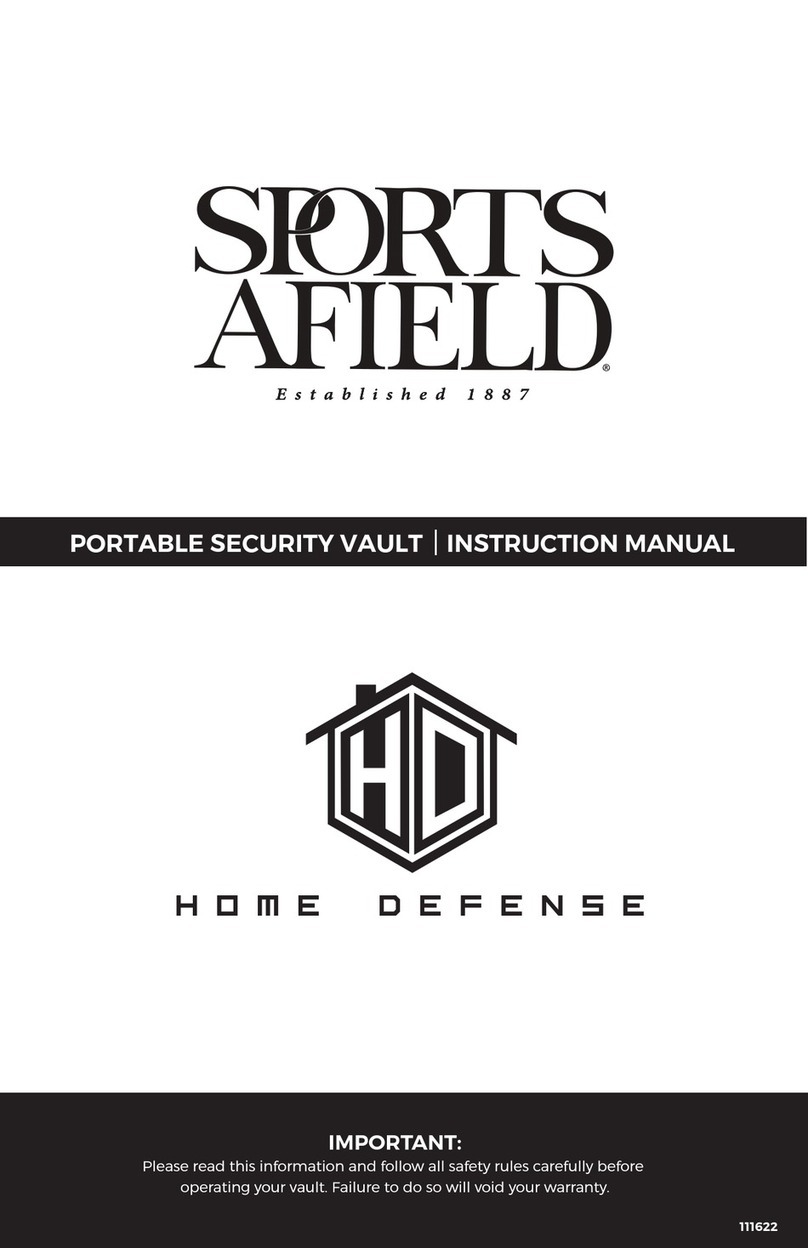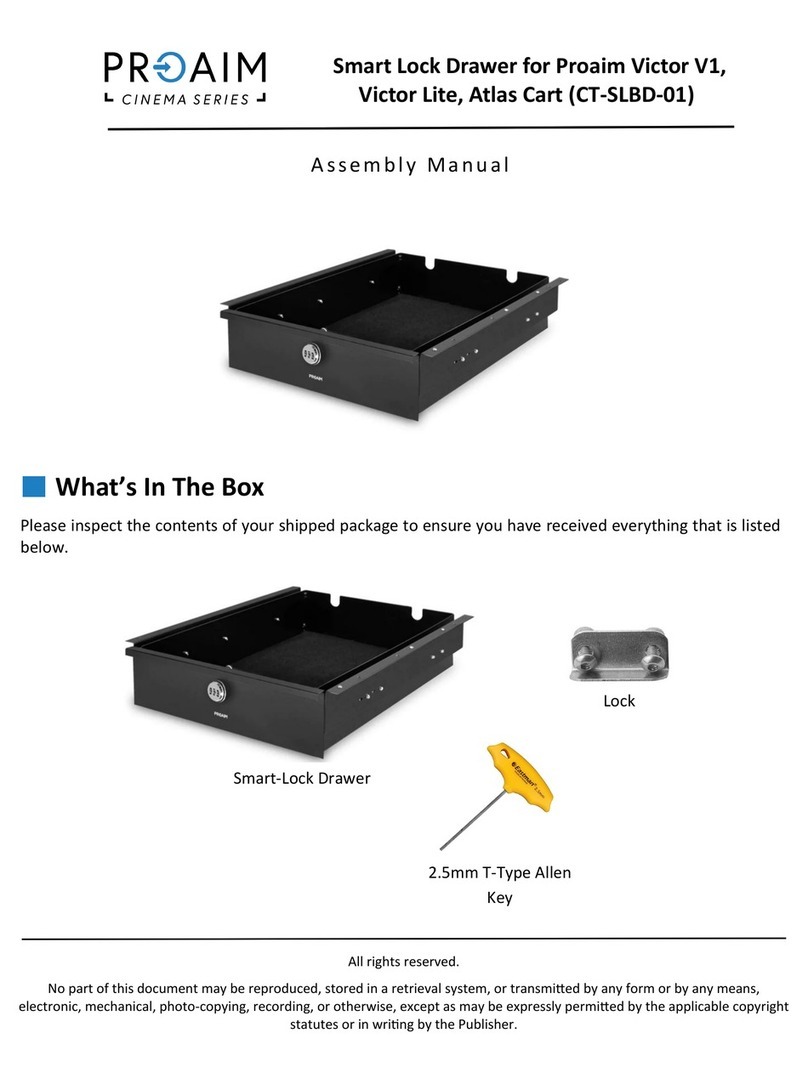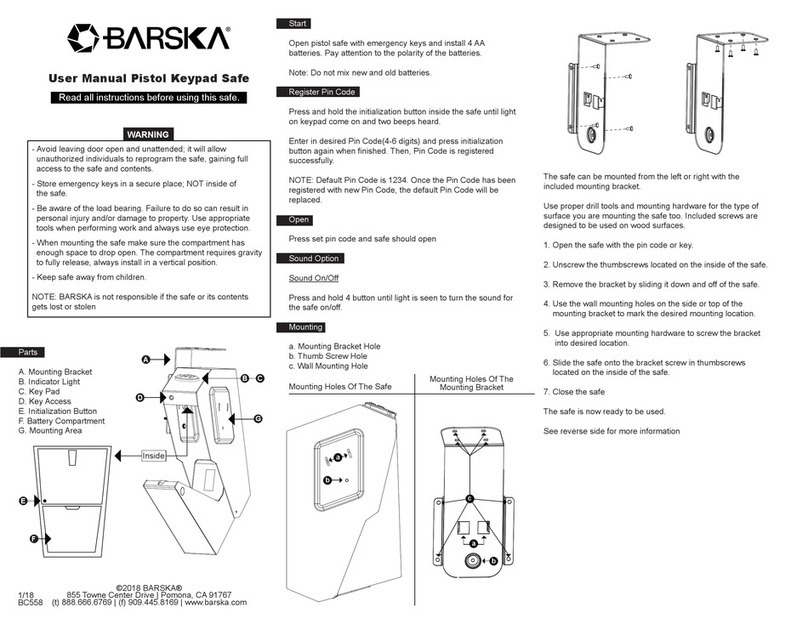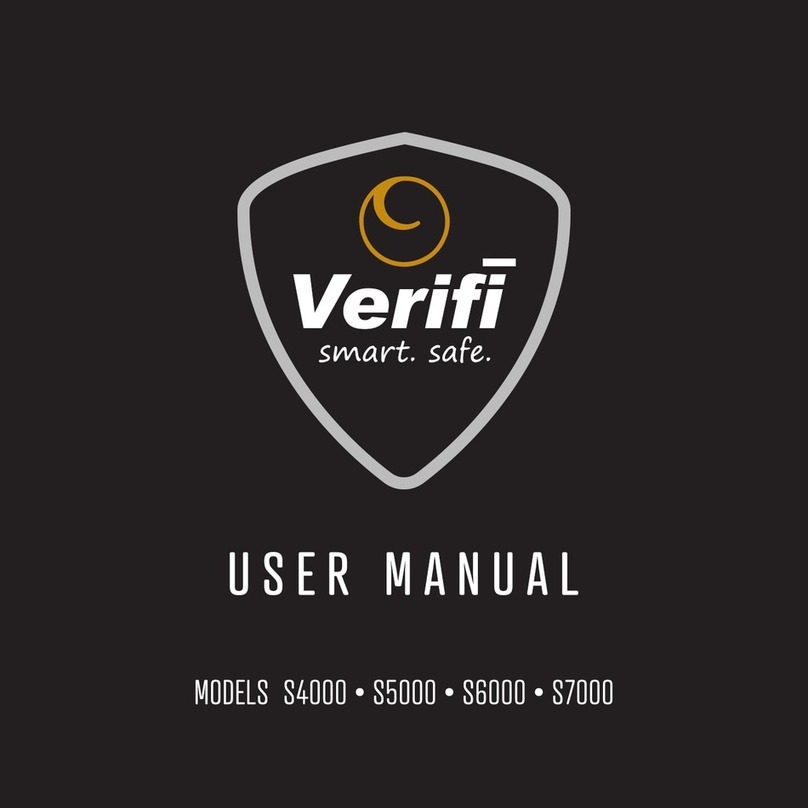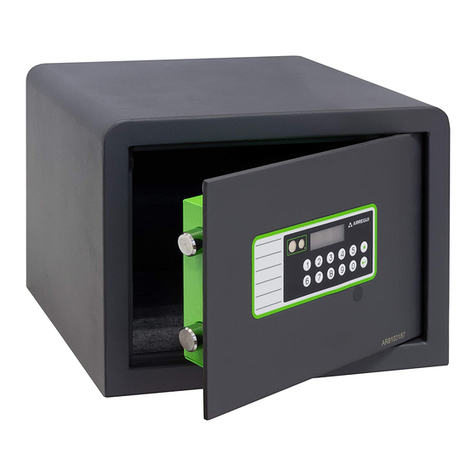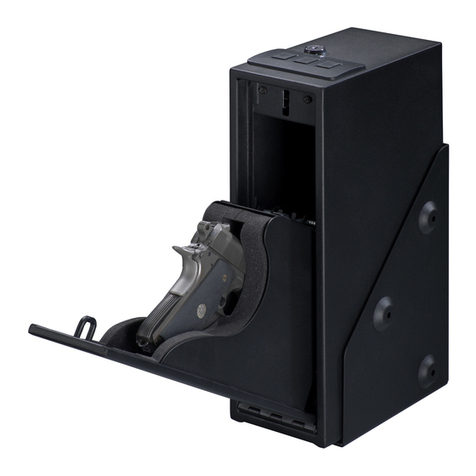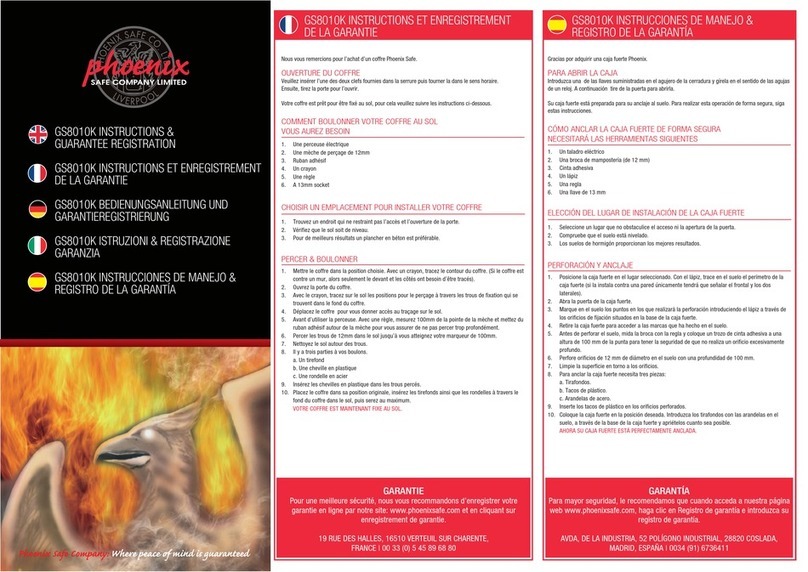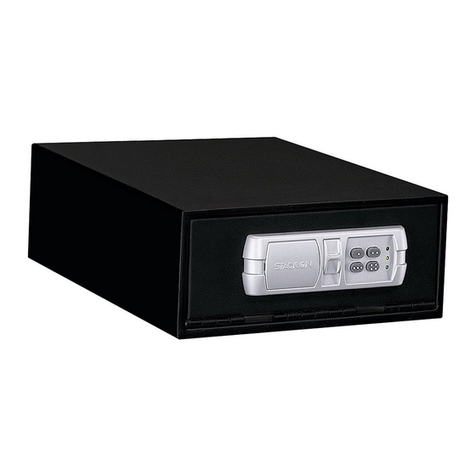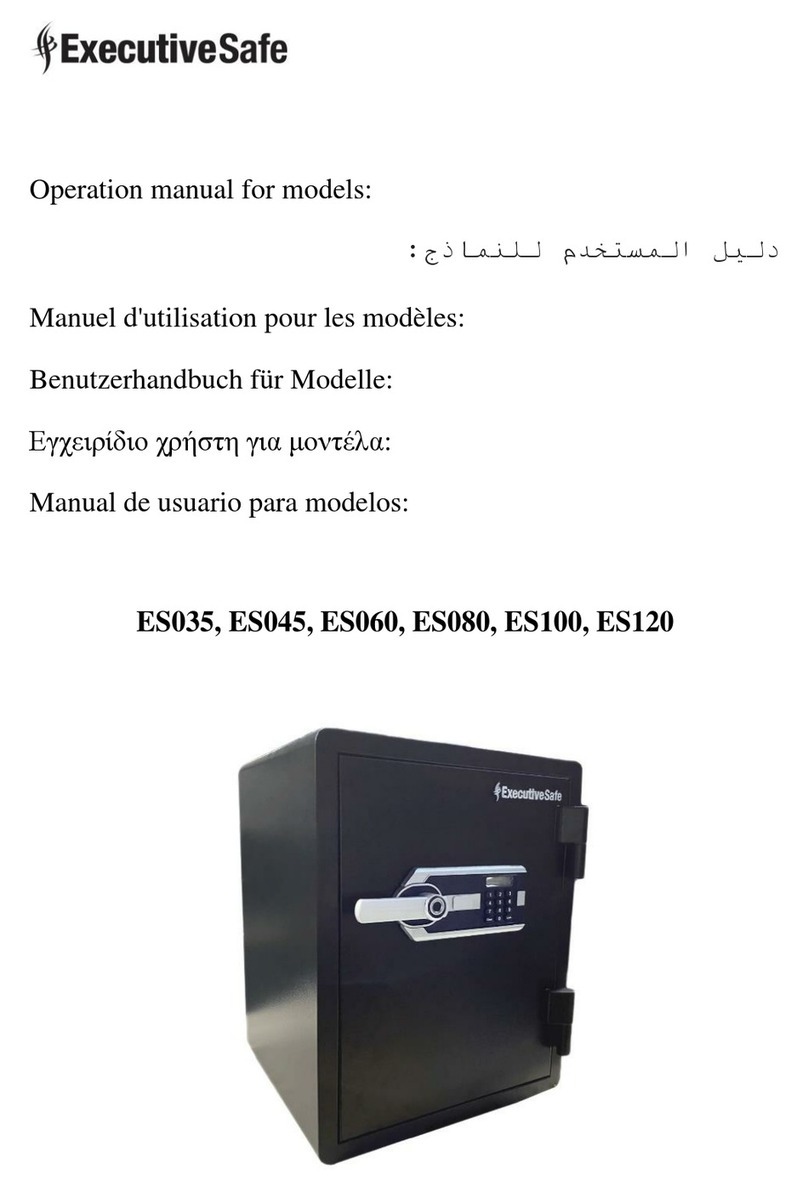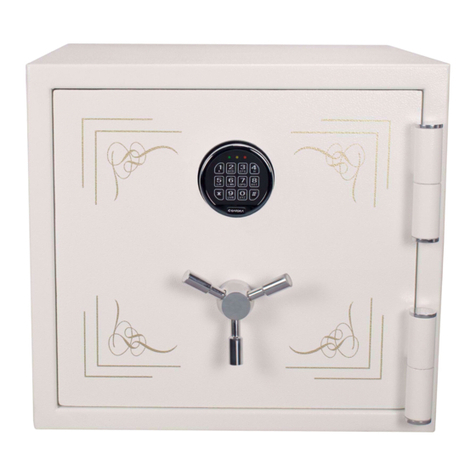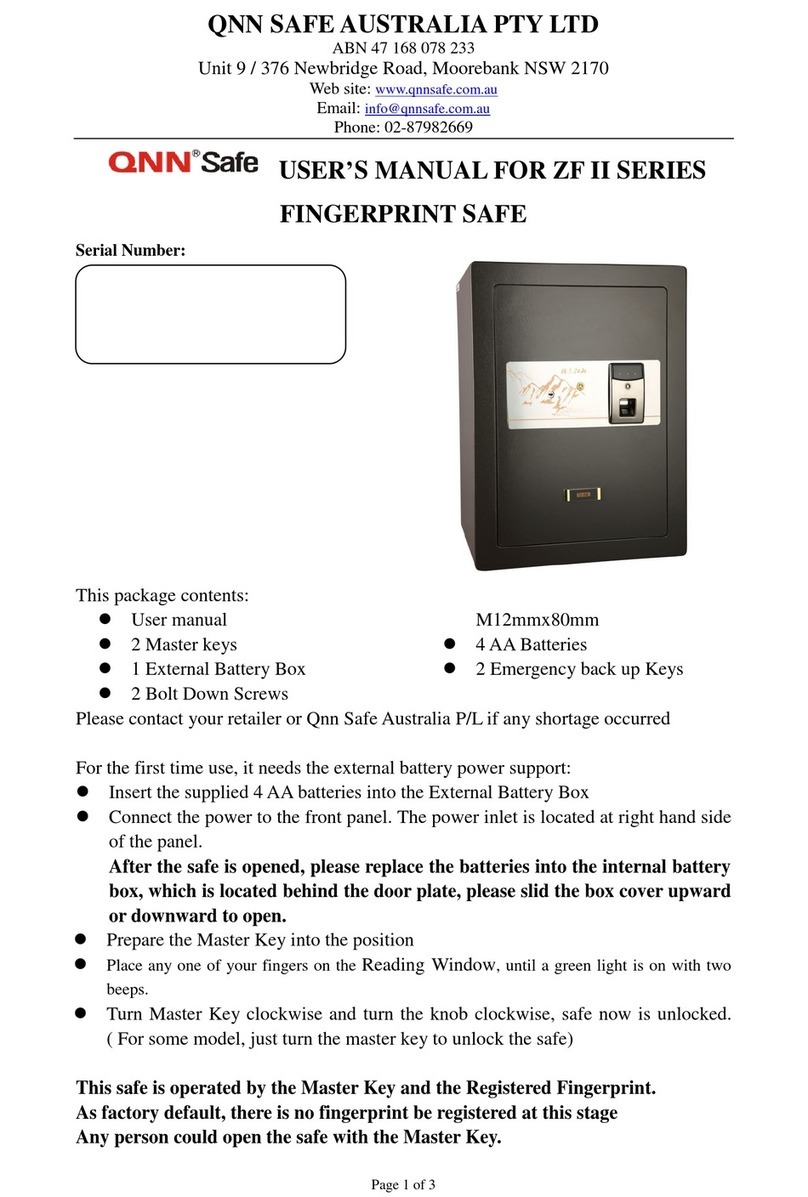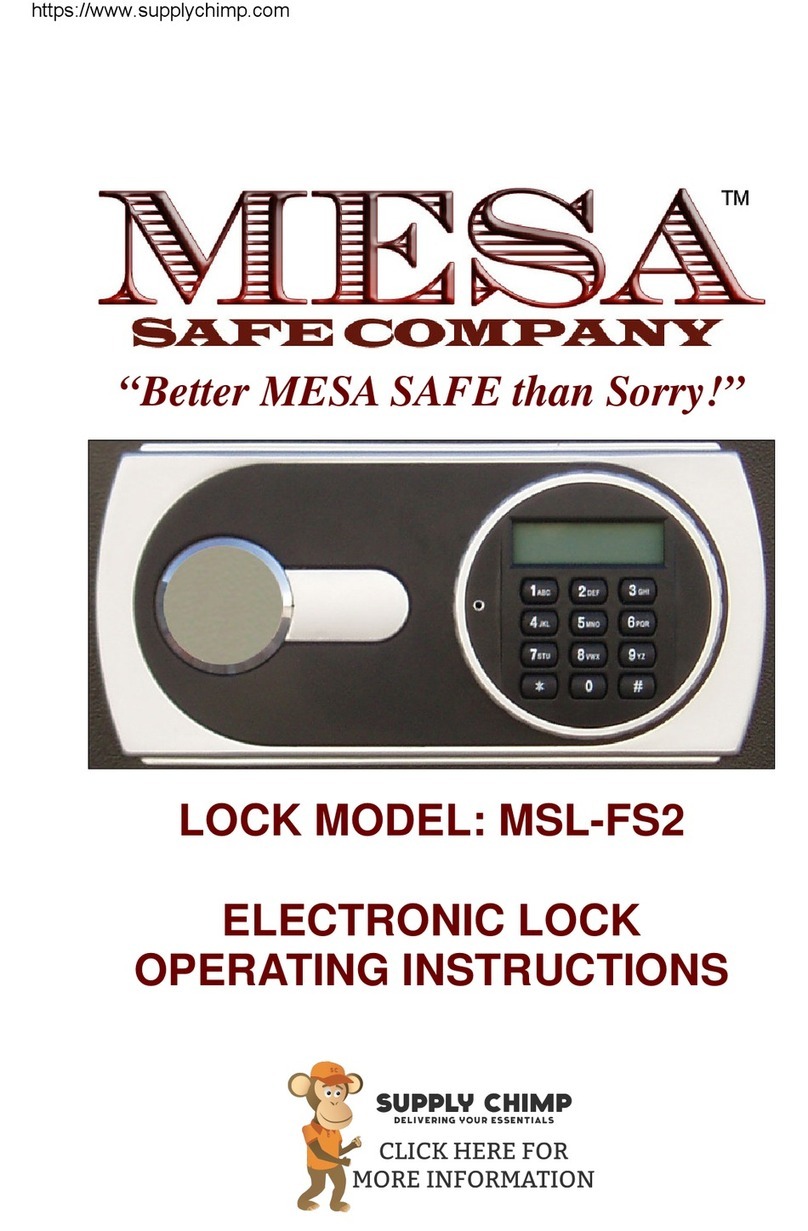batteryguard L User manual

Gebruikershandleiding Batteryguard L lithium-ion accukluizen (p.2)
User manual Batteryguard L lithium-ion batteries safes (p.10)
Manuel d’utilisation Batteryguard L coffre-fort batteries lithium-ion (p.18)
Gebrauchsanweisung Batteryguard L lithium-Ion Akku-Schrank (p.26)
Version 4.1-2023

Beste gebruiker,
Gefeliciteerd met de aanschaf van uw lithium-ion kluis! Lees deze handleiding voor gebruik
aandachtig door. Aan het eind vindt u diverse bijlagen met veiligheidsinformatie. Bewaar de
handleiding en deze informatie als naslagwerk.
Voor een optimale en langdurige werking en om de veiligheid van de kluis te waarborgen, raden wij u
aan om de kluis regelmatig te onderhouden.
Heeft u vragen over uw Batteryguard lithium-ion accukluis of is er onverhoopt een storing opgetreden?
Neem dan contact op met het Nauta Serviceteam.
Met vriendelijke groeten,
Het Nauta Serviceteam

1.Algemene veiligheidsadviezen
•Lees de volledige gebruikershandleiding door voordat u de kluis in gebruik neemt. Foutief gebruik
en niet opvolgen van waarschuwingen en voorschriften in deze handleiding kan leiden tot ernstig
letsel.
•Deze kluis is bestemd voor het opslaan en opladen van (lithium-ion) accu’s. Gebruik alleen
originele fabrieksaccu’s en neem alle waarschuwingen, aanwijzingen, afbeeldingen en gegevens
die u bij de accu ontvangt, in acht.
•Wijzig nooit zelf iets aan de instellingen van de kluis, maar neem altijd eerst contact op met het
Nauta serviceteam.
•Laat de elektrische installatie alleen repareren door gekwalificeerd en vakkundig personeel en
alleen met originele vervangingsonderdelen.
•Het serviceluik mag enkel voor veiligheidsinspecties geopend worden en alleen door het Nauta
Serviceteam en gekwalificeerd, vakkundig personeel.
•Houd altijd de kluisdeuren gesloten zodat bij een calamiteit de brand binnen de kluis blijft.
•Open nooit zelf de kluisdeuren als de sirene afgaat. Bel 112 en laat de brandweer de kluis openen.
•Leg niets op de kluis zodat de rookgasafvoer en het ventilatierooster altijd vrije doorgang hebben.
•Plaats de kluis in een goed geventileerde ruimte. Als er brand ontstaat, kunnen er namelijk giftige
rookgassen ontstaan.
•Zorg ervoor dat onbevoegden die geen instructie hebben gehad geen toegang hebben tot de kluis.
•De lithium-ion kluis is uitgerust met een CEE-stekker. Zorg ervoor dat de spanning van de
stroombron overeenkomt met de spanning van de CEE-stekker van de kluis.
•Overschrijd nooit het maximaal aangegeven ampèrage.
•Gebruik alleen originele en onbeschadigde snoeren en stekkers voor het opladen van accu’s.
•Sluit de lader altijd direct aan op de stopcontacten in de kluis en plaats hiertussen nooit losse
stekkerdozen of verlengsnoeren.
•Controleer of de zekering van de kluis omhoog staat (positie 1). De zekering bevindt zich in de kluis
aan de buitenzijde van de onderste technische ruimte.
2.Garantie
•Nauta verleent als fabrikant op de in de gebruikershandleiding aangegeven kluizen een
garantietermijn van 24 maanden vanaf leveringsdatum.
3.Transport
•Verplaats de kluis rechtop en met een palletwagen. Wij adviseren om de kluis door een
gespecialiseerd bedrijf te laten plaatsen op de locatie.
•Ondeskundig transport kan leiden tot verborgen schade aan de kluizen en aan de beschermende
brandwerende werking.

4.Kluis in gebruik nemen
Opstelling
•Plaats de kluis waterpas en op een stevige ondergrond.
•De kluis kan niet kantelen of omvallen door het hoge gewicht van de kluis.
•Plaats de lithium-ion kluis op een plek waar de deur 180° open kan.
•Zorg ervoor dat de kluis in een goed geventileerde ruimte staat. Afhankelijk van de duur van de
brand kunnen er giftige rookgassen vrijkomen.
In bedrijfstelling
•Aan de buitenzijde zit een stroomkabel van ca. 1,5 meter die standaard voorzien is van een 3-
polige CEE stekker 230V 16A. Sluit deze stekker rechtstreeks aan op een geschikte
wandcontactdoos. Gebruik daarbij geen verlengsnoer.
•Zorg ervoor dat de stroomkabel van de kluis aangesloten wordt op een vrije groep, conform de
NEN voorschriften.
•Controleer of de zekering van de kluis omhoog staat (positie 1). De zekering bevindt zich in de kluis
aan de buitenzijde van de onderste technische ruimte.
•Let op dat niet het maximale wattage van de kluis wordt overschreden (3600W).
•Zorg er bij de legborden voor dat de maximale draagkracht van ca. 60 kg niet overschreden wordt.
•Houd altijd de kluisdeur gesloten zodat bij een calamiteit de brand binnen de kluis blijft.
•Leg niets op de kluis zodat de rookgasafvoer en het ventilatierooster altijd vrije doorgang hebben.
Openen en sluiten van kluisdeur
Kluisdeur openen
•Draai de handgreep naar de open-positie.
•Open de deur zover mogelijk zodat hij open blijft staan, maar doe dit zonder te forceren.
Kluisdeur sluiten
•Draai de handgreep naar de gesloten-positie
•Als de kluisdeur open blijft staan, zal er na 2 minuten een sirene afgaan ten teken dat de deur
gesloten moet worden.
•Het sluiten van de deur gebeurt volledig mechanisch en met zeer geringe kracht van het
regelwerk. Het sluitproces is daardoor ongevaarlijk en gevaar voor verwonding is daarmee
gering.

5.Accu opbergen en opladen
De Batteryguard lithium-ion kluis is voorzien van een 230V stroomvoorziening om accu’s op te laden.
Overschrijd nooit het maximaal aangegeven ampèrage.
Totaal vermogen per contactdoos:
Maximale spanning
230V
Zekering
16A
Maximaal vermogen
3600W
Veilig opladen:
•Gebruik alleen de originele lader van de accu.
•Gebruik alleen de bestaande stopcontacten in de kluis.
•Sluit geen losse contactdozen of verlengsnoeren aan.
•De kluis werkt alleen goed en veilig als u de deuren gesloten houdt.
6.Aarding
Afhankelijk van klant specifiek gebruik van de Batteryguard lithium-ion kluis kan een
aardpuntaansluiting vereist zijn. Laat u hiervoor adviseren door gekwalificeerd, vakkundig personeel.
7.Ventilatie
•Zorg ervoor dat de kluis in een goed geventileerde ruimte staat. Afhankelijk van de duur van de
brand kunnen er giftige rookgassen vrijkomen.
•De kluis is voorbereid voor mechanische rookgasafvoer. Zo kunnen rookgassen die ontstaan bij
een eventuele accubrand naar buiten toe afgevoerd worden.
8.Kluis openen na brand
•Open nooit zelf de kluisdeur als de sirene afgaat. Bij de modellen met waarschuwingslampjes
brandt ook de lamp rood. Bel 112 en laat de brandweer de kluis openen.
•Let op, afhankelijk van de duur van de brand kunnen er giftige rookgassen vrijkomen.
•Bel het Nauta Serviceteam als de brand is geblust zodat bekeken kan worden of de kluis in gebruik
genomen kan worden.
•Informeer bij de fabrikant hoe de beschadigde accu’s moeten worden afgevoerd.

9. Verklaring signalen

10. Onderhoud, service en storingen
Onderhoud en service
Het is aan te raden om de Batteryguard lithium-ion kluizen jaarlijks te onderhouden. Bel het Nauta
serviceteam om deze onderhoudsbeurt in te plannen.
Storingen
Wanneer uw storing buiten de garantie valt, kunnen er kosten verbonden zijn aan de service. Bent u
verhinderd voor een reeds gemaakte afspraak of komt de afspraak te vervallen? Neem dan zo spoedig
mogelijk contact met ons op via +31 (0)342 - 455000 om uw afspraak te annuleren. Wij kunnen dan, in
overleg met u, een nieuwe afspraak maken. Wanneer u niet op het afgesproken tijdstip aanwezig bent
of de afspraak niet minimaal 24 uur van tevoren heeft gecanceld, zijn wij helaas genoodzaakt de
kosten voor het bezoek alsnog in rekening te brengen.
Kijk voor de meest actuele servicetarieven op onze website.

Bijlage 2: aansluitschema

Bijlage 3: verklaring van Overeenstemming

Dear User,
Congratulations with the purchase of your lithium-ion safe. Please read this manual carefully
before use. At the end you fill find various appendices with safety information. Keep the manual
and this additional information for reference.
For optimal performance and long-term functionality and to ensure the safety and security of the safe, we
recommend regular maintenance.
If you have any questions about your Batteryguard lithium-ion safe or in the unlikely event of a
malfunction, please get in touch with the Nauta Service Team.
Yours faithfully, The Nauta
Service Team

1.General safety advice
•Please read the entire manual before you start using the safe. Incorrect use and failure to heed
warnings and follow instructions may lead to serious injury.
•This safe is intended for storing and charging lithium-ion and other batteries. Only use original
manufacturers’ batteries and heed all warnings, instructions, illustrations and information
supplied with the battery.
•Never change the safe settings yourself, always contact the Nauta Service Team.
•Only allow qualified and skilled personnel to repair the electrical system and only allow those
repairs to be undertaken with original parts.
•The service hatch must only be opened for safety and security inspections and only by the
Nauta Service Team and qualified, skilled personnel.
•Always keep the safe door closed so that any fire is limited to inside the safe.
•Never open the safe door yourself if the alarm sounds. Telephone the emergency services and
leave it to the fire brigade to open the safe.
•Never impede the smoke duct and the ventilation grill by placing anything on top of the safe.
•Place the safe in a well-ventilated room. In the event of a fire, poisonous gases may be
discharged.
•Ensure that no unauthorised person who has not been instructed in the safe’s use gains
access to it.
•A CEE-form plug is attached to the lithium-ion battery safe. Ensure that the voltage of the
electricity source corresponds with that of the plug.
•Never exceed the maximum amperage indicated.
•Only use original, undamaged cables and plugs for charging batteries.
•Plug the charger directly into the charging point in the safe and never into a multiple socket
and/or extension cable.
•Make sure that the fuse switch in the safe is up (position 1). The fuse switch is inside the safe
on the outside of the lowest technical compartment.
2.Guarantee
The manufacturer Nauta provides a warranty period of 24 months from the date of delivery on the
safes specified in the manual.
3.Transport
Move the safe in an upright position with a pallet truck. We recommend that you have the safe placed
in its intended location by a specialist company.
Improper transport may lead to hidden damage to safes and to their fire proofing and fire protection.

4.Putting the safe into service
Installation
•Place the safe on a firm surface and ensure that it is level.
•The safe cannot tip over and fall due to its heavy weight.
•Place the safe where the door can open 180°.
•Ensure that the safe is in a well-ventilated room. Depending on its duration, a fire may produce
poisonous gasses.
Switching on the safe
•On the outside of the safe is an electricity cable approx. 1.5 metres long that is fitted with a
three-pole CEE-form 230V 16A plug as standard. Push the plug directly into a compatible wall
socket. Do not use an extension cable.
•Ensure that the safe cable is connected to an exclusive circuit in accordance with NEN
regulations.
•Make sure that the fuse switch in the safe is up (position 1). The fuse switch is inside the safe on
the outside of the lowest technical compartment.
•Ensure that the maximum power of the safe (3600W) is never exceeded.
•Ensure that the maximum load-bearing capacity of the shelves of approx. 60 kg is never
exceeded.
•Always keep the safe door closed so that any fire is limited to inside the safe.
•Never impede the smoke duct and the ventilation grill by placing anything on top of the safe.
Opening and closing the safe door
Opening the safe door
•Turn the handle to the open position.
•Open the door as far as possible without forcing until it stays open.
Closing the safe door
•Turn the handle to the closed position.
•If the door remains open, an alarm will sound after two minutes to indicate that the door must
be closed.
•Closing the door is entirely mechanical and requires very little force from the locking
mechanism. There is therefore very little risk involved and there is little danger of injury.

5.Storing and charging batteries
The Batteryguard lithium-ion safe provides 230V of electricity to charge the batteries in it. Never
exceed the maximum amperage indicated.
Total power per charging point:
Maximum voltage
230V
Fuse
16A
Maximum power
3600W
Safe charging:
•Use the battery’s original charger only.
•Use the charging points as installed in the safe only.
•On no account use multiple sockets and/or extension cables.
•The safe can only work properly and safely and securely if the door is kept closed.
6. Earthing
An earthing connection may be required depending on the client-specific use of the Batteryguard
lithium-ion safe. Seek advice from qualified and skilled personnel.
7.Ventilation
•Ensure that the safe is in a well-ventilated room. Depending on its duration, a fire may produce
poisonous gasses.
•The safe is installed with a mechanically ventilated smoke duct so that smoke and gasses that
are produced by any battery fire can be carried away safely.
8.Opening the safe after a fire
•Never open the safe door yourself if the alarm sounds. On models where they are installed,
warning lamps will also light up. Telephone the emergency services and leave it to the fire
brigade to open the safe.
•Be warned! Depending on its duration, a fire may produce poisonous gasses.
•Telephone the Nauta Service Team once the fire has been extinguished so that the safe can be
inspected to see if it can continue to be used.
•For advice as to the disposal of damaged batteries, contact the manufacturer.

9.Explanation of the signals
Loud alarm (door open)
Door open for more than 2 minutes
Close the door
Loud alarm (emergency)
Call the emergency services!
Do not open the safe!
Calamity resolved?
Call Nauta Service Team, +31 342 –455 055

10. Maintenance, service and faults
Maintenance and service
It is advisable to service Batteryguard lithium-ion safes once a year. Telephone the Nauta Service
Team to make an appointment.
Faults
Repairs may incur costs if a problem falls outside of the guarantee. If your appointment cannot take place
for some reason or if it is no longer necessary, get in touch with us as soon as possible on +31 (0)342 -
455000 to cancel it. We can then make a new appointment in consultation with you if necessary. You will
be charged the cost of the visit if you are not present at the agreed time or if the appointment is
cancelled less than 24 hours in advance.
For the most up-to-date service charges, please contact us.

Appendix 2: Wiring diagram

Appendix 3: Declaration of compliance

Cher client,
Félicitations pour l’achat de votre coffre-fort lithium-ion ! Veuillez lire attentivement ce manuel
avant utilisation. Vous trouverez à la fin du document, diverses pièces jointes avec des
consignes de sécurité. Conservez le manuel et ces informations pour référence ultérieure.
Pour un fonctionnement optimal et durable et pour assurer la sécurité du coffre-fort, un entretien
régulier du coffre est recommandé.
Si vous avez des questions sur votre coffre-fort Batteryguard pour batteries lithium-ion ou si une
panne se produit de façon inattendue, veuillez contacter l'équipe de service Nauta.
Cordialement,
L'équipe Nauta

1.Consigne de sécurité générales
•Lire l'intégralité du manuel d'utilisation avant d'utiliser le coffre-fort. Une mauvaise utilisation
et le non-respect des avertissements et des instructions de ce manuel peuvent entraîner de
graves blessures.
•Ce coffre-fort est destinée au stockage et à la charge de batteries (lithium-ion). Utiliser
uniquement des batteries d'origine et respecter tous les avertissements, instructions,
illustrations et données fournis avec la batterie.
•Ne jamais modifier vous-même les paramètres du coffre-fort, mais toujours contacter l'équipe
de service Nauta avant.
•Faire réparer l’installation électrique uniquement par du personnel professionnel et qualifié et
uniquement avec des pièces de rechange d’origine.
•La trappe de maintenance ne peut être ouverte que pour des contrôles de sécurité et
uniquement par l'équipe de service Nauta et du personnel professionnel et qualifié.
•En cas d'urgence, toujours maintenir les portes du coffre-fort fermées pour que le feu reste à
l'intérieur du coffre-fort.
•Ne jamais ouvrir vous-même les portes du coffre-fort si la sirène se déclenche. Appeler le 112
et laisser les pompiers ouvrir le coffre-fort.
•Ne jamais rien placer sur le dessus du coffre-fort afin de ne pas obstruer les conduits
d’évacuation des gaz de combustion et la grille de ventilation.
•Installer le coffre-fort dans un endroit bien aéré. En cas d’incendie, il peut se produire des gaz
de combustion toxiques.
•Attention : Les personnes non habilitées et n’ayant pas reçu d’instructions, ne doivent pas
avoir accès au coffre-fort.
•Le coffre-fort lithium-ion est équipée d'une prise CEE. Vérifier que la tension de la source
d'alimentation correspond à la tension de la prise CEE du coffre-fort.
•Ne jamais dépasser l’ampérage maximal indiqué.
•Pour charger les batteries, utiliser uniquement des cordons et des prises d’origine et non
endommagés.
•Toujours connecter le chargeur directement aux prises du coffre-fort et ne jamais placer de
multiprises ou de rallonges séparées entre les deux.
•Vérifier si le fusible du coffre-fort est en haut (position 1). Le fusible se trouve dans le coffre-
fort à l'extérieur du local technique inférieur.
2.Garantie
Le fabricant Nauta accorde une garantie de 24 mois sur les coffre forts indiquées dans le manuel
d'utilisation, à compter de la date de livraison.
3.Transport
Déplacer le coffre-fort à la verticale et avec un transpalette. Il est conseillé de faire installer le coffre-
fort sur place par une entreprise spécialisée.
Un transport non professionnel peut entraîner des dommages cachés aux coffres forts et à l'effet de
protection ignifuge.

4.Mise en service du coffre-fort
Installation
•Placer le coffre-fort de niveau et sur une surface solide.
•Le coffre-fort ne doit pas pouvoir ni basculer ni tomber à cause du poids de l'armoire.
•Placer le coffre-fort lithium-ion dans un endroit où la porte peut s'ouvrir à 180°.
•S’assurer que le coffre-fort se trouve dans un endroit bien aéré. Selon la durée de l'incendie, il
peut se dégager des gaz de fumée toxiques.
Mise en service
•À l'extérieur du coffre-fort, il y a un câble d'alimentation d'environ 1,5 mètre, qui est équipé en
standard d'une prise CEE 230V/16A à 3 pôles. Connectez cette fiche directement à une prise
murale appropriée. Ne pas utiliser de rallonge.
•S’assurer que le câble d'alimentation de l'armoire est bien branché sur un groupe libre,
conformément aux normes NEN.
•Vérifier si le fusible du coffre-fort est en haut (position 1). Le fusible se trouve dans l’armoire à
l'extérieur du local technique inférieur.
•S’assurer que la puissance maximale du coffre-fort n'est pas dépassée (3600W).
•Assurer que pour les étagères, la capacité portante maximale d'environ 60 kg n'est pas
dépassée.
•En cas d'urgence, toujours maintenir la porte du coffre-fort fermée pour que le feu reste à
l'intérieur du coffre-fort.
•Ne jamais rien placer sur le dessus du coffre-fort afin de ne pas obstruer les conduits
d’évacuation des gaz de combustion et la grille de ventilation.
Ouverture et fermeture de la porte du coffre-fort
Ouvrir la porte du coffre-fort
•Tourner la poignée en position ouverte.
•Ouvrir la porte le plus loin possible pour qu’elle reste ouverte, mais sans forcer.
Fermer la porte du coffre-fort
•Tourner la poignée en position fermée.
•Si la porte du coffre-fort est laissée ouverte, une sirène se déclenche au bout de 2 minutes
pour signaler qu’il faut fermer la porte.
•La fermeture de la porte est entièrement mécanique et nécessite très peu d'effort du cadre. Le
processus de fermeture n’est donc pas dangereux et le risque de blessure est alors minime.
Table of contents
Languages:
Other batteryguard Safe manuals
